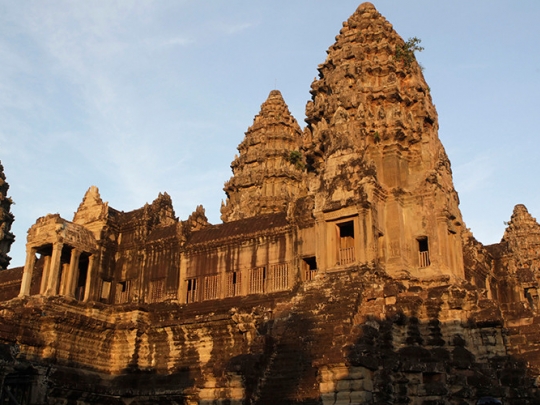‘Underground cities’: Game-changing study ‘rewrites history’ of Cambodia’s ancient Angkor Wat

Laser technologies have uncovered a vast network of hidden cities surrounding Cambodia’s famous Angkor Wat temples that reveals the Khmer empire could have been the largest in the world at its time.
Australian archaeologist Damian Evans’ findings, which are due to be published in the Journal of Archaeological Science on Monday, detail the scale of the discovery surrounding the temples of Angkor Wat, the largest religious monument in the world.
Phnom Hub in site Kulen National park 2016 06 08 pic.twitter.com/SsAxtroFtv
— Sakada_Phnom_Kulen (@SakadaBOBO) June 9, 2016
Cutting-edge laser technology, known as Lidar, which is fired from a helicopter into the ground, penetrating through forests, was used to produce detailed imagery of the Earth’s surface. It revealed a network of ancient cities between 900 and 1,400 years old, with some as big as Cambodia’s capital Phnom Penh, according to The Guardian.
The data, captured in 2015, suggests the Khmer empire would have been the largest in the world during the 12 century.
Evans first carried out a light detection and ranging study in 2012, and the project received funding from the European Research Council as a result.
The 2012 study revealed connections between Angkor Wat and other temple cities like Koh Ker. It also confirmed the presence of Mahendraparvata, a city beneath Mount Kulen, and the more recent survey revealed the scale of that city.
Water systems were also discovered, which shows the technology was used hundreds of years earlier than previously believed.
David Chandler, emeritus professor at Monash University in Melbourne and one of the leading experts on Cambodian history, described the findings as “game-changing,” saying it had succeeded in “putting hundreds of nameless, ordinary, Khmer-speaking people back into Cambodia’s past.”
The new discovery also debunks a previously held theory that suggested the Khmer had fled from the area when the Thais invaded in the 15th Century. “That didn’t happen, there are no cities [revealed by the aerial survey] that they fled to. It calls into question the whole notion of an Angkorian collapse,” Evans said.

South-East Asia’s leading archaeologist, Charles Higham, a professor at Dunedin’s University of Otago in New Zealand, summed up the discovery, “Personally, it is wonderful to be alive as these new discoveries are being made. Emotionally, I am stunned. Intellectually, I am stimulated.”
Although the collected data will take years to fully analyze, the discovery is sure to reveal more about the Khmer empire and provide a boost to Cambodian tourism. Angkor Wat is Cambodia’s main tourist attraction, but the vast archaeological park located in Siem Reap has experienced a stagnation in ticket sales in 2016, the Phnom Penh Post reports.
- Source : RT















